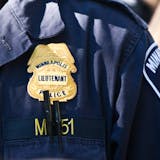For a student living on campus, the average cost nationally of attending an in-state college for four years will top $104,000. At a private, nonprofit university, it's more than $223,000.
Those numbers, which the Education Data Initiative updated in June, include tuition and fees, books and supplies and room and board. But they don't take into account the indirect costs of attending college, like laptop computers, transportation and personal spending on clothing, dining out and entertainment.
These so-called hidden expenses add thousands of dollars to the yearly cost of college. Planning and budgeting for them can help avoid financial surprises that prevent students from earning degrees, especially those from low-income backgrounds and diverse communities, according to uAspire, a national nonprofit that promotes college affordability.
Here is some advice on how students — and anyone who might be financially helping them through school, like parents — can budget beyond the basics:
More than tuition
Personal, miscellaneous expenses could total $3,000 to $4,000 a year depending on the student, according to Sue Luse, president of College Expert, an Eagan-based firm that helps students and families across the country make college choices.
Luse estimated indirect costs of $500 a year for books and supplies, $900 a year for concerts and other entertainment, $600 a year for clothing and, for students living in apartments and not on a meal plan, another $500 a year for Target runs, laundry and groceries. She projected $50 each a month for ride-share services or gas, haircuts and prescriptions or medical expenses. Car payments, cellphones and hobbies are extra.
"People are shocked at how much they need for the whole year," Luse said.
Plan early
Parents should begin helping students prepare to manage their money in college while they're still in high school, Luse said. She advises students to take a financial literacy class, and a new state law will actually require that beginning in the 2024-25 school year.



